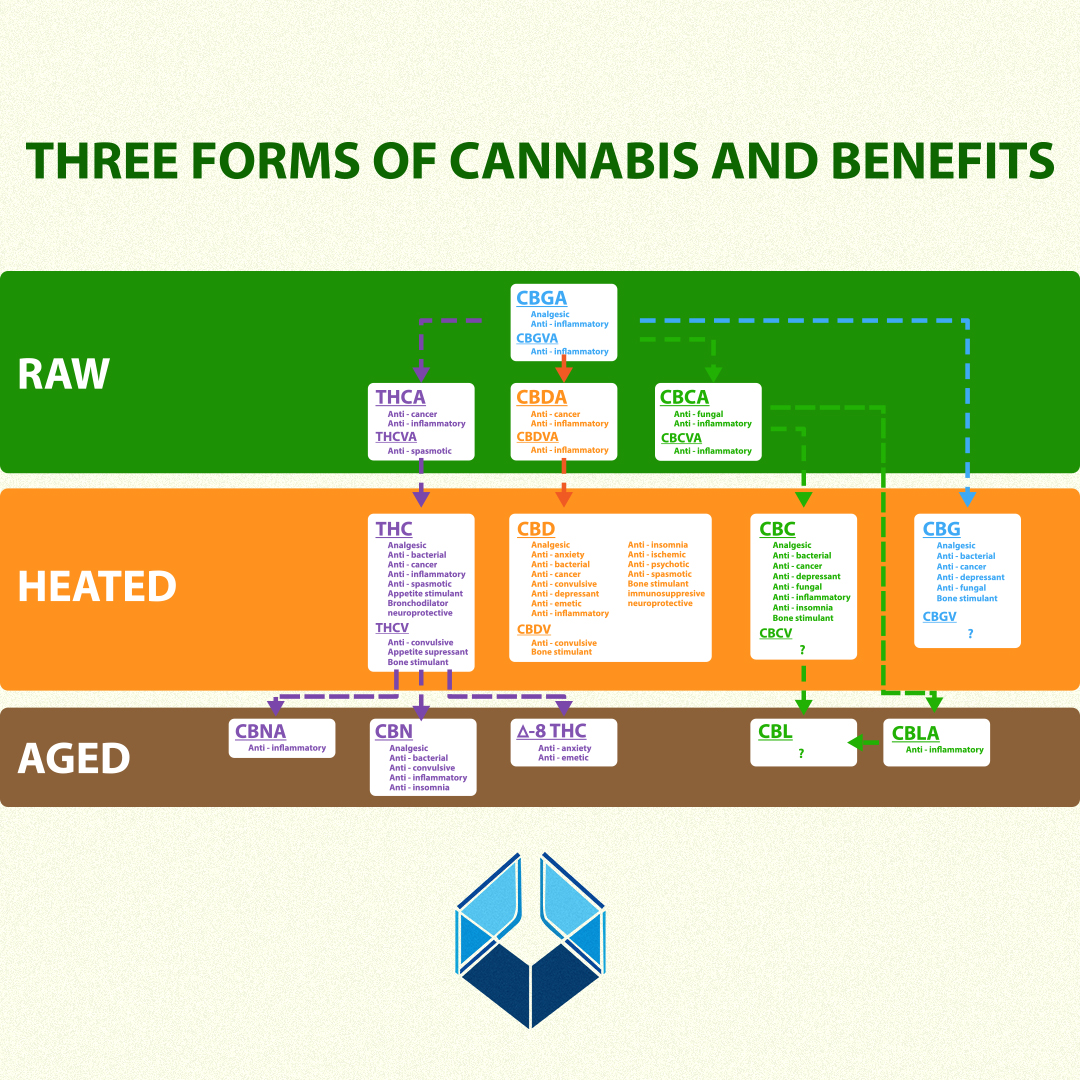CBGA: The Mother Precursor
The life cycle of cannabinoids begins with CBGA, often referred to as the “mother of all cannabinoids.” CBGA is a precursor cannabinoid acid that serves as a starting point for the synthesis of various cannabinoids in cannabis plants. CBGA can be thought of as a raw material that undergoes enzymatic reactions to produce other major cannabinoid acids, including THCA (tetrahydrocannabinolic acid) and CBDA (cannabidiolic acid).
THCA and CBDA: The Primary Cannabinoid Acids
Under the influence of specific enzymes, CBGA is transformed into THCA and CBDA. THCA is the precursor to THC, the psychoactive cannabinoid responsible for the euphoric effects of cannabis. Similarly, CBDA is the precursor to CBD, a non-intoxicating cannabinoid known for its potential therapeutic properties. These acidic forms are typically found in raw cannabis and are converted to their active counterparts through decarboxylation, which involves the application of heat or prolonged exposure to light.
Oxidation and the Formation of CBNA
Over time, cannabinoids can undergo oxidation, leading to changes in their chemical composition. THC, for example, can degrade into cannabinol (CBN) through oxidation. CBN is a mildly psychoactive cannabinoid that is formed when THC is exposed to oxygen and light. As THC degrades further, it ultimately converts into CBNA (cannabinolic acid), a breakdown product with diminished psychoactive effects.

Factors Influencing Transformation
Several factors influence the transformation of cannabinoids throughout their life cycle. Light exposure, particularly UV light, can accelerate the breakdown and transformation of cannabinoids. Time and storage conditions, such as temperature and humidity, can also affect cannabinoid stability. Additionally, processing methods like extraction and refinement can influence the cannabinoid profile of cannabis products.
Conclusion:
The life cycle of cannabinoids, from CBGA to CBNA, is a captivating journey of transformation and change. Starting as precursor cannabinoid acids, cannabinoids undergo decarboxylation to become their active forms, such as THC and CBD. Over time, oxidation can lead to further changes, resulting in the formation of cannabinoids like CBN and CBNA. Understanding the factors that influence cannabinoid transformation is crucial for optimizing the quality and potency of cannabis products and ensuring a better understanding of their effects on consumers.
At The Silica Chamber, we blend science with hands-on experimentation, diving deep into peer-reviewed research to uncover the best in cannabis cultivation, consumption, and lifestyle. Whether you’re here to learn, experiment, or share insights, we’re building a community that thrives on knowledge and curiosity.
DavidPaul
In love with smart home designing, photography and nerding out over network architecture

